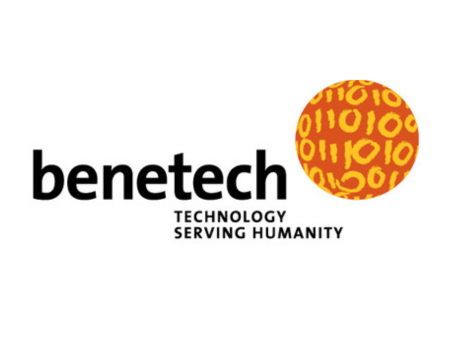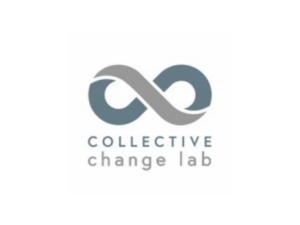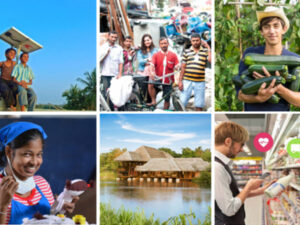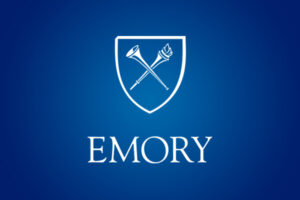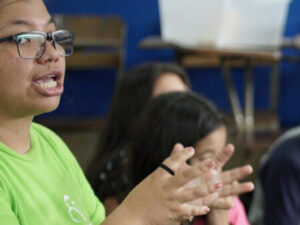Benetech addresses systemic barriers to education equity through deep engagement within individual communities. Benetech’s technology and services break down systemic barriers and empower all learners regardless of ability.
Ayan Kishore of Benetech spoke with Ashley Hopkinson on April 10, 2024. Click here to read the full conversation with insights highlighted.
Ashley Hopkinson: Can you tell me a little about yourself and the organization? It would be great to hear the origin story, and how you got started in this work.
Ayan Kishore: Hi, my name is Ayan Kishore. I’m the CEO of Benetech, which was established in 2000. I’m not the founder, but I joined 2 1/2 years ago to help continue the good work of creating equitable access to education for students with disabilities.
Ashley Hopkinson: Who would you say is the primary beneficiary of the work you do?
Ayan Kishore: We try to center our work on children with disabilities: children who are struggling to read, neurodiverse children, oftentimes undiagnosed, but more often than not diagnosed by the time they come to us, which can be anytime throughout their lives from the time they enter elementary school.
Ashley Hopkinson: There are a lot of different organizations that serve children with disabilities, from different angles and at different levels. What do you feel makes the work of this organization distinctive? Is there a particular gap in the field that you guys fill?
Ayan Kishore: We use technology a lot in our programs, and there’s one specific niche that I think we are solving, which is that printed material is really hard for students who struggle with reading, students who process written content in different ways, or students who look but cannot see the text on a page. We make learning content and education materials accessible to those students by making them available in a mechanism that they can compute.
For example, a printed book can be available in audio, so you can hear the book. It can be available in braille, it can be available in audio with synchronized words being highlighted, which helps students stay focused and keeps their attention, and all sorts of other different formats. We have roughly 1.3 million books that students can access through our digital repository.
Ashley Hopkinson: That’s amazing. Do you have a story of impact that you could share that illustrates why you’re doing this work? Maybe something that gets you excited, or something that was heartwarming, or just illustrative of, “Okay, this is why we’re here.”
Ayan Kishore: There are so many of those stories. We work globally, but the story that comes to mind is a story from a school for the blind in India that I visited last year. We support schools for the blind in India by helping them adopt digital tools so students can have access to learning content through a form or a computer, as opposed to being dependent on a scribe or somebody else.
I visited this school in the state of Gujarat, which is in the west of India. We got to meet a lot of the children, and I met this girl who was blind and who had never used a computer. She said that through our program, she had gotten access to a computer a few months prior, and in a local language, so she did not have to learn in the national language. She was learning in the local language.
She was in 10th grade. In India you have national examinations in the 10th grade and 12th grade. How you perform on those exams determines whether you get into college. The truth is, most blind students in India do not go to college. Blind students generally do these examinations with a scribe, so somebody would have to be sitting with them in the examination hall.
This girl, who had never before had access to a computer, said that in a short period of time, through our support and through our support in her school, she figured out how to use a screen reader, so she could hear content on the computer and navigate the computer independently. She figured this out very quickly, and that was the main thing–that she could very quickly figure out how to learn on her own and access the materials using a computer. We have made all that accessible to her, and she did it with our support.
She took the national examinations on her own, using a computer in a local language, and she did amazingly well. She did better than most of her peers. She has a couple more years left in school, but she’s on her way to going to college and doing whatever she wants. It was really exciting to see that.
I think a lot of this work takes a long time to happen at a systemic level. But if you are able to provide tools and build an enabling environment, in our case in the school system, you can see change happen really quickly in people’s lives, and you can put them on a very different path. There are so many more stories like that.
It was amazing for me to have that interaction and to see that, through our work, we’re enabling her to pursue her dreams.
Ashley Hopkinson: That is amazing. I like just seeing how you set out to solve this problem of really trying to reach students–in terms of language, in terms of support–and then were able to witness them excel and take it to another level.
You mentioned systems change. What do you think other leaders, or practitioners, or people in this space, like government liaisons, need to do to help move towards systems change? What do you feel like you’re doing to move toward systems change, and what do you feel other partners can do to support that effort?
Ayan Kishore: There’s a lot, and I think it’s hard when you’re focused on underserved communities. In this case, we are talking about students with particular disabilities, intersected with socioeconomics and race and other factors. The numbers are small, and there’s a lot of work that needs to go into supporting these students.
What we are doing in different countries is building the environment for that. In India, we’re helping schools on their journeys of adopting technology into their instruction so students can be independent. In the US, we are working with the global publishing ecosystem to make sure that all the content they produce is more accessible. Right now, 90-plus percent of the world’s learning content is completely inaccessible to those with disabilities. We are helping train publishers to make sure that every book is accessible.
There is all sorts of systems work that we’re doing in bringing attention to this area and helping support schools, community organizations, and civic society to better serve those with disabilities, particularly when it comes to education.
Ashley Hopkinson: What do you feel is missing in terms of helping move things forward? What other support might be valuable?
Ayan Kishore: I think people have realized that to support children with disabilities, we need to make education inclusive. I think everyone buys into this, and I think governments are putting that into their national education policies.
The challenge is understanding what it takes to actually implement these changes. I think we are facing this challenge because a lot of times, projects–both those that work directly with the government and those that are funder-supported–are specifically focused on outputs and outcomes achieved in certain periods of time.
But to actually make education inclusive, it’s a rather long journey, and it needs more. There’s currently a teacher shortage around the world, and there’s a lack of time for teachers to just do what they’re doing to begin with. On top of that, they need to understand how to serve students with disabilities, how to apply that learning in their practices, and how to make their classrooms more inclusive. This is a challenging ask. We need supports that can lead to this becoming mainstream. I think that requires an effort from many different angles
It is also much more expensive to implement an intervention to support those who have disabilities because part of it is getting them assistive technology, which is honestly already a cost point, particularly if you look at global education programming. But if you don’t do that, you are not going to move the needle. You cannot expect a blind student in a mainstream classroom to succeed along with others without having the tools or accommodations they need. I think part of this is understanding what it is going to cost and take.
There is also behavior change. So many of the world’s children with disabilities are outside the class, or outside the school, so just getting them into schools is a challenge. There’s a long road ahead.
Ashley Hopkinson: I think most people don’t consider that there has to be a lot of behavior change around this. How do we even think about differentiated learning? How do we support teachers?
Ayan Kishore: One thing is realizing that in supporting children with disabilities, you are helping everyone. If a class is inclusive to those with disabilities, it also helps students who do not have disabilities. When you make content accessible, it helps every learner, even those who excel at reading. Simply having those supports increases their reading comprehension and their ability to read.
History shows that when you build things to support those with disabilities, those innovations and programmatic interventions apply to everyone and lift everyone together. I think we need to factor that into decision-making so that it’s not just, “You’re trying to fund children with disabilities.” We’re talking about an equitable future for everybody, which raises everybody.
Ashley Hopkinson: What would you say is an insight you’ve taken away from this work, whether that’s about the programs you’re running, or your connections with other parts of the organization? What has been a takeaway for you from the work that you do?
Ayan Kishore: There are a lot of things. Number one is respect for families who have children with disabilities. If a child with disabilities does not have family support, I can’t even imagine the outcome. It is hard to even wrap your head around the amount of time a caregiver or a parent puts into supporting and advocating for children with disabilities–and I’m talking about in America. When I think about people in low-income communities, or single mothers having children with disabilities, I feel the burden of the inequities both for those with disabilities and those supporting them.
Having said that, I think one of my takeaways is just commending those who have spent much of their life supporting those with disabilities. That pushes and drives us so that we can help them and make it easier for them, and we can provide supports directly to students through their caregivers and other role models in their lives.
Another thing is realizing that those with disabilities are super smart. We live in an ableist world that does not accommodate them in ways that allow them to excel. But history is littered with those with disabilities being innovators and leaders, and I’m encouraged by that. I’m also encouraged when I interact with students who also have disabilities. I’m always floored by how smart they are, and how well-read they are.
Yet I feel the pain of the current moment, in which we are not helping those with disabilities in meaningful ways, or encouraging them to become innovators. We are creating more barriers for them in other ways, and that’s challenging.
One of the things that we are working on now is making sure that those with disabilities get into STEM careers because those jobs are growing. But STEM content is generally locked to books, which are often inaccessible to those with barriers. For example, if you’re reading a math book, all of the equations, charts, and graphs are images that don’t have any output.
We’ve been working on AI technology to make that sort of content accessible so, for instance, students could also hear equations. We think this is a solvable problem. I want to make sure that we have scientists and engineers with disabilities working on solutions. Whether we are building AI or working on climate change, I want to make sure they are bringing their lens and that they have the technical skills to do that.
We already know that they’re really smart; now, we need to make sure that they have [the provisions they need, provisions that are not yet in place to support them.]
Ashley Hopkinson: I love your definition of being inclusive as making sure that every area is accessible to all so all can learn and grow. How, then, do you define and measure success for your organization? What are your markers of evidence that you’re making progress towards some of these goals that you’ve set?
Ayan Kishore: At the basic operating level, we’re looking at how many students and how many teachers are using our tools, how many books they’re reading, and so on. But really what we’re concerned about is learning outcomes for those who we’ll be serving.
We ran a study last year to understand the impact Bookshare, which is the core program that we run, has on reading comprehension and fluency. We got very positive results from that. In just a few months, we could see a great level of progress in comprehension. Those kinds of learning outcomes are a big one.
We are also tracking life outcomes. We’re talking about whether students can get placed into the workforce and those sorts of results. Given that we are mostly focused on education, we’re primarily focused on whether students with disabilities are able to do well on their examinations, and do well in areas like literacy.
Ashley Hopkinson: How do you see the work of the organization evolving over the next five years or so?
Ayan Kishore: We have already evolved a lot, and the organization really evolves every day. Our strategic plan from last year is already old.
When we started, we were just software for social groups and organizations. I’ve been working from very early on with those with disabilities, and around the time that I joined, we decided that we had to focus and center our work. We decided to focus our work around serving and supporting those with disabilities, as opposed to figuring out how best we can leverage technology in general to do good.
I am becoming more and more passionate about serving those who are underserved. That is very much about figuring out how we can reach the hardest populations to reach. It’s always a challenge, and this is why I think nonprofits exist. We’ve got to fill the gaps that are not filled. We’ve got to figure out where the cracks are and fill them. It’s hard, but that’s what we’ve got to do.
The second area is that we are seeing a dramatic change in education and education technology. We’re talking about the destruction from the pandemic. That led to a lot of inventions in ed-tech, which in some cases exacerbated the challenging and inequitable conditions for those with disabilities because they didn’t have access to the school systems.
We’re also talking about new technology, like generative AI and those sorts of chatbots, which are used much more by professionals with disabilities than those who don’t have disabilities. I think that the way we learn is going to change dramatically.
We continue to advocate for, and I think there will be, regulatory change around [making content accessible]. These things happened in Europe. They passed an Act that, starting next year, will basically require all publishers to make any content that they produce accessible. Hopefully America will follow suit.
Ideally, we will get to a point in which access to accessible content is no longer an issue. That might be too short a horizon, or it might not be, but we are working towards that. I also think the focus is going to be more and more on learning, interactive digital learning, and media.
Kids love to play video games, but they’re not very accessible for students with disabilities. When we visited one school for the blind in Baltimore, I had a conversation with the Academic Director, and they said, “Well, the main challenge is that these blind kids in Baltimore want to play the same video games that their peers are playing.”
So I think we’re going to see that a lot of this is about how we can make sure that any product that’s put out in the market is accessible, and that any educational game or service is accessible. And not just accessible, but inclusive and designed to help those with disabilities.
I think we’re moving in that direction. We’re trying to bring together organizations to help them on their journeys around this, too.
Ashley Hopkinson: Wonderful. Thank you.
Click here to read the full conversation with insights highlighted.
Ashley Hopkinson is an award-winning journalist, newsroom entrepreneur and leader dedicated to excellent storytelling and mission-driven media. She currently manages the Solutions Insights Lab, an initiative of the Solutions Journalism Network. She is based in New Orleans, Louisiana.
* This interview has been edited and condensed.

